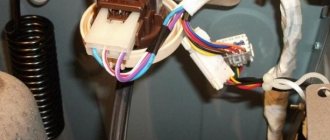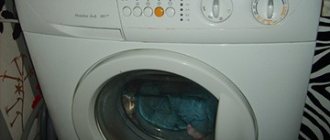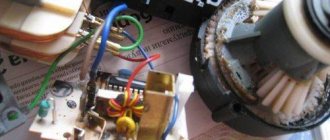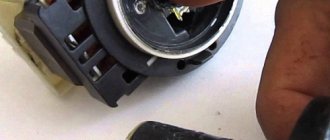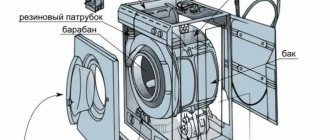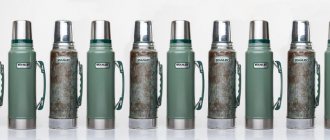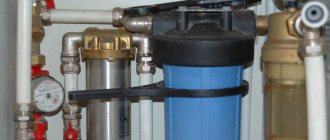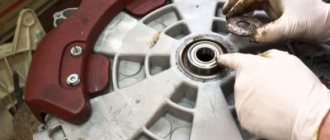Additional Cleaning and Prevention Tips
- If you burn the fabric and its traces remain on the sole, immediately apply a cotton rag soaked in cold water to the stained area. A sudden change in temperature will help peel off the burnt fabric from the metal.
- To reduce scale and rust deposits inside the iron, each time after ironing, while the appliance is still warm, pour out all remaining water from it.
- To delay descaling your iron, try to use filtered water for steaming.
Do not use metal sponges or hard brushes to clean the soleplate of the iron, especially if it has a Teflon or ceramic coating. Also, to avoid scratching the metal, avoid using abrasive cleaners.
And finally, we suggest watching a useful video on how to clean an iron with a metal, ceramic or Teflon sole using folk and special means.
Tap water is full of various impurities. They negatively affect the operation of steam generators and irons. Because of this, scale and rust form inside the device, which reduces the quality of ironing and damages the fabric. If the steam system is rarely used, the water tank may become moldy and green on the inside. It is important to know how to clean an iron from mold, rust and scale in order to extend its working life and avoid damage to fabrics.
Brown liquid is leaking from the iron - what to do?
If water is leaking due to rust in the steam generator, the problem can be solved by using cleaning products:
- lemon acid;
- mineral water;
- antiscale;
- vinegar.
Modern irons have a built-in self-cleaning system, but sometimes it is not enough. How to clean a steam generator from rust:
- Fill the steam generator with a cleaning solution containing any of the listed products to the maximum level.
- Turn it on at the highest temperature setting.
- Unplug and place over a sink or any other container.
- Press the steam release or self-cleaning button.
- Carry out the procedure until all the water has evaporated.
- Fill the empty tank with fresh, clean water and check operation. If rust is still oozing through the holes, the procedure must be repeated until completely clean.
Important! This method only works for minor damage to parts. If the silicone has completely melted and the parts are rusted through, the cleaning procedure will only cause harm.
To prevent the sole from leaking, you need to periodically remove the rod from the reservoir, placing it in a solution of vinegar or citric acid for a couple of hours. Then rinse with water, dry and put back in.
Also, when cleaning, use a pencil to remove dirt on the surface of the sole. You need to place a sheet of paper or an unnecessary piece of fabric between the appliance and the ironing board. To clean, just heat the iron, run a pencil over the surface, and then wait for the residue to drip onto the backing.
Cleaning the iron
Extreme cleaning method for irons with metal soles:
- Place the device on the frying pan.
- Pour hot water so that the iron is immersed 15 mm in it.
- Add table vinegar. To correctly calculate its amount, you need to take 1 glass per 1 liter of water.
- Set the steam regulator to maximum operating mode.
- Heat a frying pan and bring water to a boil.
- Turn off the stove and let the water cool.
- Rinse the sole with clean water and leave to dry for several days.
To check the work, it is better to use a piece of unnecessary fabric or an old T-shirt that you don’t mind.
How else can you remove rust stains from the outside:
- Extra grind salt. Pour salt onto a cloth or white paper, turn on the iron and walk over it as if ironing. If you add paraffin, you can avoid minor scratches. The method is not suitable for Teflon.
- Soda solution. To clean the device, you need to dilute 1 teaspoon of soda with water to make a paste. The mixture is applied to a cold sole, left for 15 minutes, then thoroughly wiped with a damp cloth or sponge.
- Hydrogen peroxide. A small amount of peroxide will remove rust; just moisten a cotton pad and thoroughly wipe the surface of the sole. The advantage of this method is the complete absence of unpleasant odor.
Important! Do not use too caustic products such as acetone, this will damage the plastic parts.
Features of internal cleaning
If the iron spits rust, this may be due to the deterioration of the internal elements of the silicone steam generator. These parts are gaskets between the water tank and the base of the device.
- During prolonged use, the sole becomes hot. At the right time, the thermostat, which turns off the iron to prevent excessive overheating, does not work.
- The metal heats up to such an extent that it begins to affect the insulation of the silicone steam generator chamber.
- At a heating surface temperature of about 300 degrees, even heat-resistant silicone material melts.
- The iron begins to spit out brownish liquid. This is not rust, but molten silicone, similar in color to it.
It is necessary to replace a thermostat that has stopped working. The new unit will allow you to get rid of excessive overheating of the metal elements of the iron. If this is not done, the device may become unusable.
Real rust occurs not only due to poor quality water, but also due to a violation of the insulation of metal elements from moisture inside the steam generator chamber. If they are corroded, there is no point in repairing the device. If it’s just a matter of rusty or moldy stains due to bad water, the iron can be used quite well after proper cleaning.
DIY repair
Depending on what kind of breakdown occurred in your household steam station, the step-by-step instructions for fixing it will be different.
Most models of steam generators have a similar design, so the causes of failure are the same. There may be differences in some nuances that an experienced person will be able to identify and fix with their own hands.
Let's look at the most common breakdowns and ways to repair a steam generator if it breaks down.
No steam
One of the most common breakdowns is a violation of the steam supply through the steam generator. This problem happens for a number of reasons.
- When using low-quality water containing various impurities, the filter of the electrical appliance quickly becomes clogged, as a result of which the steam supply stops. You can fix the problem like this: unscrew the long flexible hose of the steam generator, remove the mesh filter and rinse it, then reassemble all the parts in the reverse order, and then test the operation of the device.
- The holes on the working surface of the iron become clogged with limescale, and its particles prevent steam from escaping. To fix this problem, add descaler to the water tank. If you don't have it on hand, prepare a solution consisting of 1000 ml of water and 10 g of citric acid powder. Turn on the device and let the water boil. Then the steam generator is turned off and time is given for the water in it to cool. Now drain the solution through the hole into which you poured it before this procedure - you will see that the liquid pouring out of the electrical appliance is dark brown in color. This procedure must be repeated several more times until the drained solution becomes clear. The tank is then rinsed with clean water and your steam generator is ready for use again.
Steam may stop forming in an electrical appliance if the heating element device, called a heating element, has burned out. It is best to replace such a part at a warranty workshop.
Water flows
Instead of steam, water may flow from the steam generator. You can identify and fix such a malfunction yourself.
- The shut-off valve has failed. You can verify this if, by pouring water into the device and shaking it from side to side, you see drops of water near the valve. Such a malfunction can be corrected by tightening the valve more firmly before operation, sometimes requiring complete replacement of the valve.
- The steam supply hose is pinched due to bending or its integrity is compromised. When steam is supplied, water will accumulate inside the hose due to obstruction, and during use of the steam generator it will come out. To again allow hot steam to pass freely through the hose, the water accumulated in it must be drained. To do this, turn off the electrical appliance, let it cool completely, straighten the hose, lift it above the steam generator, then allow the water to drain.
Doesn't turn on
It happens that the steam station does not turn on. There may be several reasons for this.
- Some devices have an automatic power cut if the steam generator is clogged with scale deposits. When the Decal indicator on the control panel lights up, you will need to clean the water tank with special products or a 10% citric acid solution.
- The electrical cord of the device may be damaged, but you cannot see it under the braid. Sometimes when you turn on an electrical appliance, you may smell the smell of burnt plastic. Such a malfunction is difficult to diagnose and fix at home. In this case, you will need to replace the power cord, and this is best done in a specialized workshop.
- The steam generator may not turn on for other reasons. For example, as a result of a failure of the power button or because the control board in the device has burned out. Such breakdowns can only be repaired by a specialist who understands the repair of household electrical appliances.
Don't rush to a service center if your steam generator won't turn on. Sometimes this happens due to reasons not related to equipment failure.
For example, an electrical outlet has failed, or there has been a power outage in the apartment. It happens that the power indicator light on the instrument panel simply burns out, although the steam generator itself is working and supplying steam.
Rusty water flows
During the steaming process, liquid with a rusty tint may flow from the steam station, or steam may be supplied with tiny particles of rust, leaving red-colored traces on the fabrics. Let's look at the causes and their elimination.
- Rust has formed in the water tank, which has entered the steam hose and clogged the coarse filter. This happens if, after working with an electrical appliance, you do not drain the remaining unused tap water, which acts on the walls of the tank for a long time, causing corrosion in it. To remove rust, you need to turn off the steam generator, let it cool, drain the contaminated water, then rinse the tank, then fill in a new portion of liquid and use the device. Using distilled water will help prevent this problem.
- If the steam station is used for a long time at extreme heating levels, the silicone gaskets may fail. This happens because the heating element melts them, coloring the water and preventing the liquid from turning into steam. This malfunction can be eliminated by replacing the gaskets or heating element. Repairs of this level of complexity are performed in a workshop.
splashes
When heating, the device may spray small portions of water and steam.
- This occurs due to the fact that water in the form of condensation accumulates near the holes in the heating sole of the iron, and when the device is turned on, the liquid comes to the surface. In this case, no special repair measures are required. After the condensate has evaporated, the steam generator will operate normally.
- If the appliance is equipped with automatic descaling, then if there is any remaining water in the tank after use, when turned on again, it will come out through the steam supply holes in the form of splashes. You can fix the problem without repairs - just press the steam button several times.
Pressure is not adjustable
In the steam generator, water is converted into steam under pressure, and if the setting of this option does not work, the steam output is significantly reduced.
- Check whether the electrical appliance is clogged with scale - if you clean it, the function of the steam generator is often restored.
- Expensive models of steam generators are equipped with automatic control of the power of the supplied steam. To determine the malfunction, try operating the device in several modes. If the steam pressure is reduced in all modes, it means that the electronics have failed, which can only be restored in a service workshop.
Other faults
During operation of the steam generator, other malfunctions may arise that cannot always be eliminated on your own at home.
- When using the device, a puddle forms under it. Such a malfunction requires urgent disconnection of the steam generator from the power supply, as the situation may threaten you with electrical injury. The reason for the leakage of liquid may be due to a violation of the integrity of the water tank, which must be replaced in the workshop.
- During long-term use, the sensors of an electrical appliance often burn out. Most often, the water level indicator fails, the steam supply button, or the pressure level switch sticks. Diagnosis and repair will require the use of special tools that not everyone has at home.
Repairing complex household electrical equipment requires certain skills.
If it is not possible to eliminate the malfunction using available means, there is no need to aggravate the situation. Inept actions can lead to a significant increase in the cost of repairs, which will subsequently have to be carried out at a service center.
Cleaning accessories
Some models have a special self-cleaning system. For this purpose there is a special button located on the body of the device. According to the manual, heat the device to the required temperature. To start the cleaning process, press the button.
With such a system, any housewife will be able to clean the device without effort.
If rust and scale are not washed out of the iron, it is disassembled and all parts are washed manually. If you do not completely trust your knowledge of technology, it is better to entrust this activity to a professional.
Household chemicals
If brownish or whitish stains appear on the sole, which differ from ordinary burnt marks, you can use Anti-scale. The process is simple. Following the instructions, dilute the product in water, then pour it into a container and heat the iron strongly. Turn it off and wait about 30 minutes. Drain the contaminated liquid and clean the container with clean water.
German-made compounds containing organic acids and anti-rust components also help: Topperr, Bosch, Filtero 605.
To clean the iron from rust inside with such preparations, follow this procedure:
- Dissolve the product in water in a ratio of 3:1.
- Preheat the iron by setting the control to maximum, and then turn it off.
- Pour the composition into the water inlet, place the device horizontally and wait 2 hours.
- Pour out the product and rinse the inside a couple of times with water.
Immediately before ironing, check the cleanliness of the appliance by releasing steam.
The drug “Silit” perfectly removes corrosion and scale. To clean the iron, you need to turn it upside down and carefully pour the cleaning agent drop by drop into the sole holes. After a few minutes, traces of rust will appear on the outside. Remove them with a dry cloth, then add water, and press the steam release buttons several times.
Prevention measures
To ensure that the iron lasts a long time and rust does not appear in the steam generator, you need to follow a few simple rules:
- It is advisable to fill the reservoir with distilled water or at least boiled water.
- To prevent rust, do not leave liquid in the internal reservoir. After turning off the iron, you need to evaporate all the steam.
- To prevent corrosion and clogging, the iron is placed vertically after ironing.
- Do not wrap the cord too tightly when the appliance is still hot.
- Steam supply is used only when necessary so that parts do not wear out ahead of time.
- Do not use metal brushes or sponges when cleaning the iron from rust.
And, of course, you should follow all the instructions specified in the instructions for the device. Proper care of equipment will extend its service life.
Video about cleaning the iron
The best way to prevent iron leakage is timely prevention. The appearance of a brown liquid indicates rusty parts inside the device or a melted silicone gasket. In this case, repair or complete replacement of the iron will be required. Any measures to clean the steam generator and the sole are effective if there is little rust.
join the discussion
Share with your friends
Modern irons have a number of additional functions, one of which is the ability to use steam for better and easier ironing. The equipment into which water is supposed to be poured must withstand such a load and correctly distribute the liquid inside, directing it to the steam compartment. If something goes wrong, water begins to flow out of the iron for no reason, causing discomfort and sometimes harming the clothes, especially if their color is brown. To quickly understand the causes of problems, you need to know more about what can happen to the iron, where to look for the problem and how to solve it.
Folk remedies
You can also clean your ironing device from traces of corrosion, lime and fungus using traditional methods. Mold marks will go away if you use recipes against rust and scale, but to remove mold forever, it is better to choose specific products.
Recipes against rust and scale
If the device spits out rusty liquid, or white scale stains remain on the fabric, compounds with high acidity are used. Usually vinegar or citric acid is used, but you can also use sparkling water.
Cleaning the device with vinegar:
- Pour vinegar mixed with water in equal parts into the iron, about a third of the capacity.
- Place the iron vertically and heat it to maximum, wait 5-10 minutes. During this time, the heating and cooling cycle will repeat, do not turn it off.
- Lift the appliance horizontally above a large bowl and press the steam release button. As a result, rusty liquid should flow out of the plantar holes. Let the steam flow until all dirt comes out of the ironing device.
- Fill the reservoir with clean water and heat the machine again to get rid of any remaining dirt and vinegar. Once or twice, without removing the basin, let off the steam.
Finally, pour out the water and wipe the surface and holes with a clean cloth.
Citric acid is even easier to use because it does not produce such unpleasant-smelling fumes as vinegar. You need to dilute a 25-gram package in 250 ml of warm water until completely dissolved. Then heat the iron and pour in the resulting mixture, wait 5-10 minutes.
Hold the device in a horizontal position over a basin and release steam several times so that dirty liquid comes out of the holes. After removing it, you need to pour out the liquid, pour in clean water and perform the same steps to remove any remaining scale. Then dry the sole and holes with a piece of cotton cloth.
It is safest to clean your iron with carbonated water. It is used not only for ironing equipment, but also for washing machines and kettles. You must proceed as follows:
- Fill the reservoir with water and heat the device at high temperatures.
- Disconnect from power supply.
- Shake the device.
- Place a piece of cotton under the iron and press the steam release button several times.
- Pour out the remaining water when the appliance has cooled completely.
Perform the manipulation several more times until completely cleaned.
Mold control compounds
Stains with a brownish, gray or greenish tint remaining on the fabric indicate the appearance of mold in the water compartment, and bright green spots indicate algae growth.
Ways to clean the inside of an iron from mold at home:
- Bleach. When preparing the solution, take one part of the drug to ten parts of water. The resulting composition is poured into the container. After about five minutes, the steam function turns on and the dirt comes down through the holes. Finally, the container is rinsed with boiled water.
- Ammonia. You can achieve the effect by making a mixture of water and alcohol and filling the water compartment with it for several hours. The solution is removed using the steam extraction function. Additionally, the steam outlets are cleaned. After cleansing, ammonia is washed off with boiled water.
- Hydrogen peroxide. The drug is poured into the water compartment, after ten minutes it can be cleaned. To speed up the process, use a narrow, hard brush.
- Tea tree oil. Enough 10 drops per 20 ml of water. The composition is poured into the reservoir of the device. Then you need to remove the liquid through the steam holes.
An old effective remedy is baking soda. It is non-toxic and gently acts on the walls of the container, removing mold bacteria and algae. The advantage of this method is that soda is able to absorb moisture, thereby preventing the further appearance of microorganisms. Clean the tank with an aqueous solution at the rate of 1/4 large spoon of powder per glass of boiled water.
If the water container is covered with algae that forms a green coating, it is cleaned with brown water. It is a natural, chemical-free, non-toxic product suitable for cleaning drains and toilets. Can be used as an insecticide in the fight against mold.
To remove greens from the device’s reservoir, you must:
- dilute 200 ml of the drug in 2.5 liters of water;
- Fill the container with the solution and clean it with a stiff brush;
- remove the remaining composition with purified water.
One rinse is enough to remove excess solution. The product remaining on the surface of the tank is not removed, as it will prevent the growth of bacteria.
How to clean the inside of an iron
A household appliance becomes dirty not only from the outside, but also from the inside. At the same time, it becomes difficult to use - red rust spots will appear on the laundry. You can clean your iron in the following ways:
- With self-cleaning function. This is the simplest option. To do this, you need to heat the iron several times to maximum and then turn it off. Hold the household appliance over the waste cloth and press the self-cleaning button. This procedure can be repeated several times in a row, and then wipe the soleplate of the iron with a damp cloth.
Video: Recommendations for using the iron's self-cleaning function
- Citric acid. When there is no self-cleaning function, a simple method comes to the rescue. A 25 g bag of citric acid should be diluted in warm water until completely dissolved. Then pour it into the tank, heat the iron and apply steam. When the household appliance has cooled down, its sole must be wiped with a weak solution of vinegar.
Video: Cleaning the iron with citric acid
- Antiscale. This product will remove rust and scale. You will need 5 g of powder, 200 ml of warm water. Stir the product until dissolved, pour into the tank and leave for 30 minutes. Then the tank needs to be rinsed with warm water, wiped and put back in place.
Anti-corrosion care for irons
Like any household appliance, the iron requires protection against internal contamination. Then its service life will increase, and the laundry will not become dirty when ironing.
Follow these recommendations:
- do not iron synthetics at maximum temperature;
- monitor the quality of the water used;
- Always drain the container after ironing.
Do not use only distilled water for ironing. Its boiling point is higher, vaporization is worse, which can cause damage to the internal walls of the device. It is better to choose boiled. Hard water is mixed with distilled water in equal parts.
If rust marks appear on ironed laundry, it is worth disassembling the device. Perhaps the problem is the melting of silicone parts or corrosion of metal parts. In order not to aggravate the situation by cleaning, it is worth carrying out a preventive check and, if necessary, sending the iron for repair.
Tap water is full of various impurities. They negatively affect the operation of steam generators and irons. Because of this, scale and rust form inside the device, which reduces the quality of ironing and damages the fabric. If the steam system is rarely used, the water tank may become moldy and green on the inside. It is important to know how to clean an iron from mold, rust and scale in order to extend its working life and avoid damage to fabrics.
Prevention of the problem
To avoid problems in the future use of your irreplaceable assistant, follow a few simple rules common to all models of steam generator-type irons:
- Fill the inner chamber only with distilled water. If it is impossible to get it, use it, at least boiled.
- Never leave moisture in the iron's internal reservoir because it will encourage rust. Always try to evaporate all the water before turning off the appliance.
- After finishing ironing, leave the iron in an upright position. This prevents the corrosion process and clogging of the steam holes;
- Do not wind the iron cord too tightly, especially while the device is still warm.
- Follow the operating instructions carefully.
Proper care and compliance with operating rules will extend the life of the device and eliminate sudden breakdowns.
Source: kartinki-kletochki.ru
Features of internal cleaning
If the iron spits rust, this may be due to the deterioration of the internal elements of the silicone steam generator. These parts are gaskets between the water tank and the base of the device.
- During prolonged use, the sole becomes hot. At the right time, the thermostat, which turns off the iron to prevent excessive overheating, does not work.
- The metal heats up to such an extent that it begins to affect the insulation of the silicone steam generator chamber.
- At a heating surface temperature of about 300 degrees, even heat-resistant silicone material melts.
- The iron begins to spit out brownish liquid. This is not rust, but molten silicone, similar in color to it.
It is necessary to replace a thermostat that has stopped working. The new unit will allow you to get rid of excessive overheating of the metal elements of the iron. If this is not done, the device may become unusable.
Real rust occurs not only due to poor quality water, but also due to a violation of the insulation of metal elements from moisture inside the steam generator chamber. If they are corroded, there is no point in repairing the device. If it’s just a matter of rusty or moldy stains due to bad water, the iron can be used quite well after proper cleaning.
Cleaning accessories
Some models have a special self-cleaning system. For this purpose there is a special button located on the body of the device. According to the manual, heat the device to the required temperature. To start the cleaning process, press the button.
With such a system, any housewife will be able to clean the device without effort.
If rust and scale are not washed out of the iron, it is disassembled and all parts are washed manually. If you do not completely trust your knowledge of technology, it is better to entrust this activity to a professional.
Household chemicals
If brownish or whitish stains appear on the sole, which differ from ordinary burnt marks, you can use Anti-scale. The process is simple. Following the instructions, dilute the product in water, then pour it into a container and heat the iron strongly. Turn it off and wait about 30 minutes. Drain the contaminated liquid and clean the container with clean water.
German-made compounds containing organic acids and anti-rust components also help: Topperr, Bosch, Filtero 605.
To clean the iron from rust inside with such preparations, follow this procedure:
- Dissolve the product in water in a ratio of 3:1.
- Preheat the iron by setting the control to maximum, and then turn it off.
- Pour the composition into the water inlet, place the device horizontally and wait 2 hours.
- Pour out the product and rinse the inside a couple of times with water.
Immediately before ironing, check the cleanliness of the appliance by releasing steam.
The drug “Silit” perfectly removes corrosion and scale. To clean the iron, you need to turn it upside down and carefully pour the cleaning agent drop by drop into the sole holes. After a few minutes, traces of rust will appear on the outside. Remove them with a dry cloth, then add water, and press the steam release buttons several times.
Folk remedies
You can also clean your ironing device from traces of corrosion, lime and fungus using traditional methods. Mold marks will go away if you use recipes against rust and scale, but to remove mold forever, it is better to choose specific products.
Recipes against rust and scale
If the device spits out rusty liquid, or white scale stains remain on the fabric, compounds with high acidity are used. Usually vinegar or citric acid is used, but you can also use sparkling water.
Cleaning the device with vinegar:
- Pour vinegar mixed with water in equal parts into the iron, about a third of the capacity.
- Place the iron vertically and heat it to maximum, wait 5-10 minutes. During this time, the heating and cooling cycle will repeat, do not turn it off.
- Lift the appliance horizontally above a large bowl and press the steam release button. As a result, rusty liquid should flow out of the plantar holes. Let the steam flow until all dirt comes out of the ironing device.
- Fill the reservoir with clean water and heat the machine again to get rid of any remaining dirt and vinegar. Once or twice, without removing the basin, let off the steam.
Finally, pour out the water and wipe the surface and holes with a clean cloth.
Citric acid is even easier to use because it does not produce such unpleasant-smelling fumes as vinegar. You need to dilute a 25-gram package in 250 ml of warm water until completely dissolved. Then heat the iron and pour in the resulting mixture, wait 5-10 minutes.
Hold the device in a horizontal position over a basin and release steam several times so that dirty liquid comes out of the holes. After removing it, you need to pour out the liquid, pour in clean water and perform the same steps to remove any remaining scale. Then dry the sole and holes with a piece of cotton cloth.
It is safest to clean your iron with carbonated water. It is used not only for ironing equipment, but also for washing machines and kettles. You must proceed as follows:
- Fill the reservoir with water and heat the device at high temperatures.
- Disconnect from power supply.
- Shake the device.
- Place a piece of cotton under the iron and press the steam release button several times.
- Pour out the remaining water when the appliance has cooled completely.
Perform the manipulation several more times until completely cleaned.
Mold control compounds
Stains with a brownish, gray or greenish tint remaining on the fabric indicate the appearance of mold in the water compartment, and bright green spots indicate algae growth.
Ways to clean the inside of an iron from mold at home:
- Bleach. When preparing the solution, take one part of the drug to ten parts of water. The resulting composition is poured into the container. After about five minutes, the steam function turns on and the dirt comes down through the holes. Finally, the container is rinsed with boiled water.
- Ammonia. You can achieve the effect by making a mixture of water and alcohol and filling the water compartment with it for several hours. The solution is removed using the steam extraction function. Additionally, the steam outlets are cleaned. After cleansing, ammonia is washed off with boiled water.
- Hydrogen peroxide. The drug is poured into the water compartment, after ten minutes it can be cleaned. To speed up the process, use a narrow, hard brush.
- Tea tree oil. Enough 10 drops per 20 ml of water. The composition is poured into the reservoir of the device. Then you need to remove the liquid through the steam holes.
An old effective remedy is baking soda. It is non-toxic and gently acts on the walls of the container, removing mold bacteria and algae. The advantage of this method is that soda is able to absorb moisture, thereby preventing the further appearance of microorganisms. Clean the tank with an aqueous solution at the rate of 1/4 large spoon of powder per glass of boiled water.
If the water container is covered with algae that forms a green coating, it is cleaned with brown water. It is a natural, chemical-free, non-toxic product suitable for cleaning drains and toilets. Can be used as an insecticide in the fight against mold.
To remove greens from the device’s reservoir, you must:
- dilute 200 ml of the drug in 2.5 liters of water;
- Fill the container with the solution and clean it with a stiff brush;
- remove the remaining composition with purified water.
One rinse is enough to remove excess solution. The product remaining on the surface of the tank is not removed, as it will prevent the growth of bacteria.
Ways to solve the problem
Citric acid is one of the most effective cleaners.
The main condition for successful and long-term operation of an iron with a steam generator is its regular cleaning. Modern models are equipped with self-cleaning systems, but even their presence does not negate the washing procedure.
The following are used as cleaners:
- Citric acid solution (20 g per glass of water);
- Mineral sparkling water;
- Antiscale.
The cleaning procedure itself consists of the following steps:
- The cleaner is poured into the iron reservoir.
- The device is heated to maximum.
- Unplug the iron and hold it in your hand over a container. It is convenient to carry out this procedure over the kitchen sink.
- Press the self-cleaning button or produce a “steam burst” several times.
- The steam is released until all the liquid has come out.
- After cleaning with the solution, a control portion of clean water is poured into the tank. If brown liquid continues to come out of the holes, refill the cleaning solution.
Important! Cleaning this way will only be effective if the internal parts are only slightly damaged. If the silicone has completely dissolved, and the rust has seriously “eaten through” the parts, it will not be possible to save the device. Filling in cleaning fluid when the silicone is destroyed may not solve, but rather aggravate the problem.
